In Grade 4, we learned about conserving our environment. We learned about uses of soil in farming.
Soil erosion in the environment
Sometimes soil can be lost from the environment.
Activity 1
Observing soil erosion in the environment and identifying eroded sites.
Let us Observe
Move around the school compound or in the neighbourhood.
- Identify parts of the farm without plants growing.
- What may have happened to the soil?
Let us understand
- Some parts of the land have plants while some parts are bare.
- The soil has been eroded from the bare parts.
- Plants do not grow well in eroded parts.
Meaning of soil erosion
Activity 2
Discussing the meaning of soil erosion in the environment.
Let us Find Out
Look at the following photograph and say what it shows.
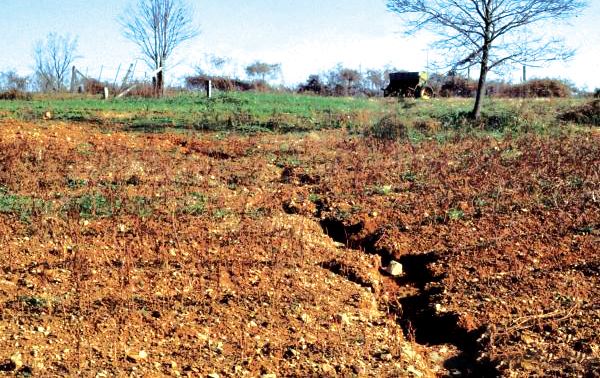
- Share with your friend what you know about soil erosion.
- Which areas does soil erosion happen?
- What happens to the eroded soil?
- Why should we prevent soil from being eroded?
Let us understand
- Soil erosion is the carrying away of loose top soil.
- The erosion of soil leaves the land unsuitable for growing strong and healthy crops.
- Bare and loose soil is eroded easily.
Soil Recovery
Eroded soil can be recovered and used for farming practises.
How eroded soils can be collected and used for farming
Soil that is eroded is useful for farming.
Activity 3
Finding out how eroded soils can be collected and used for farming.
Let us Find Out
A.

B.
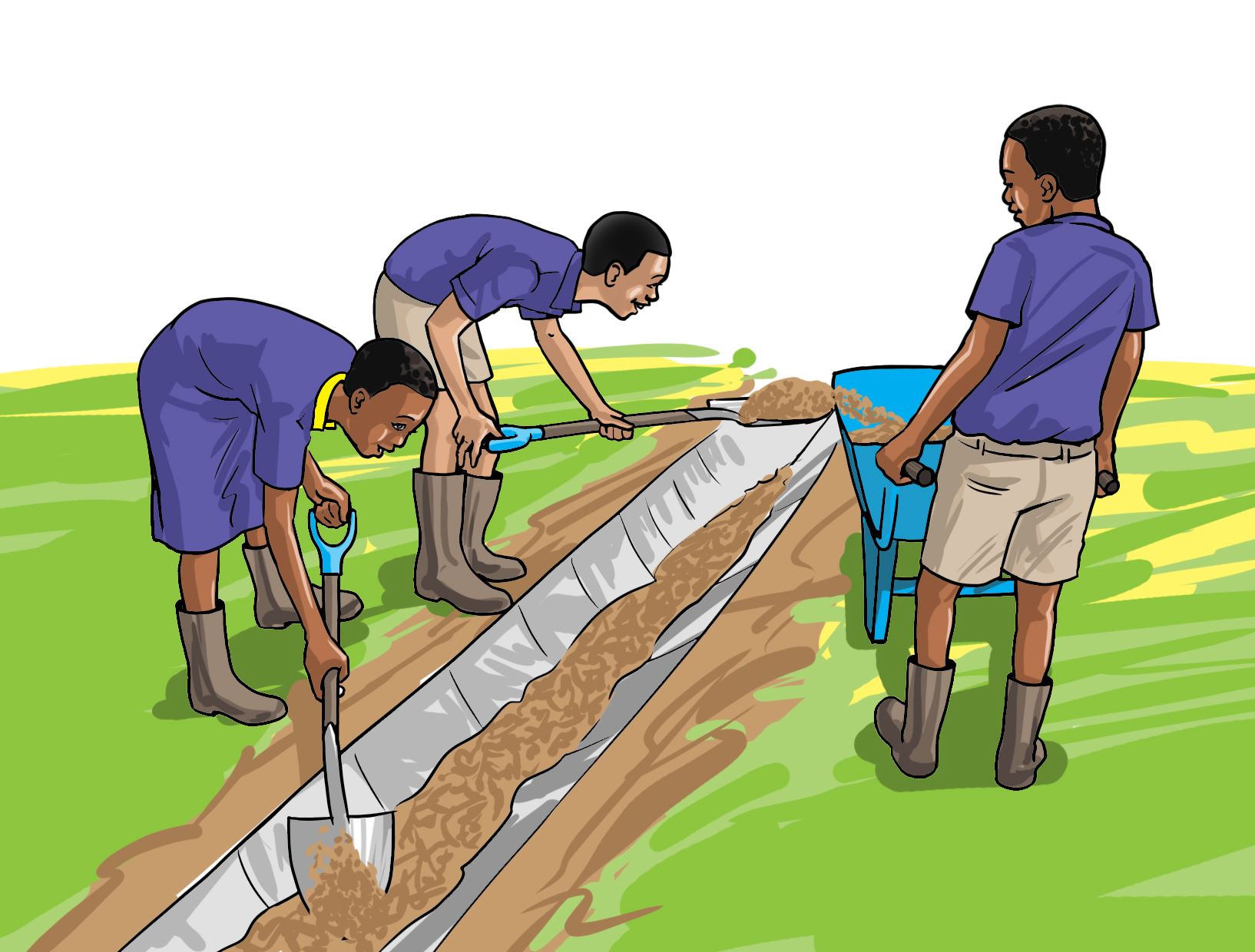
C.
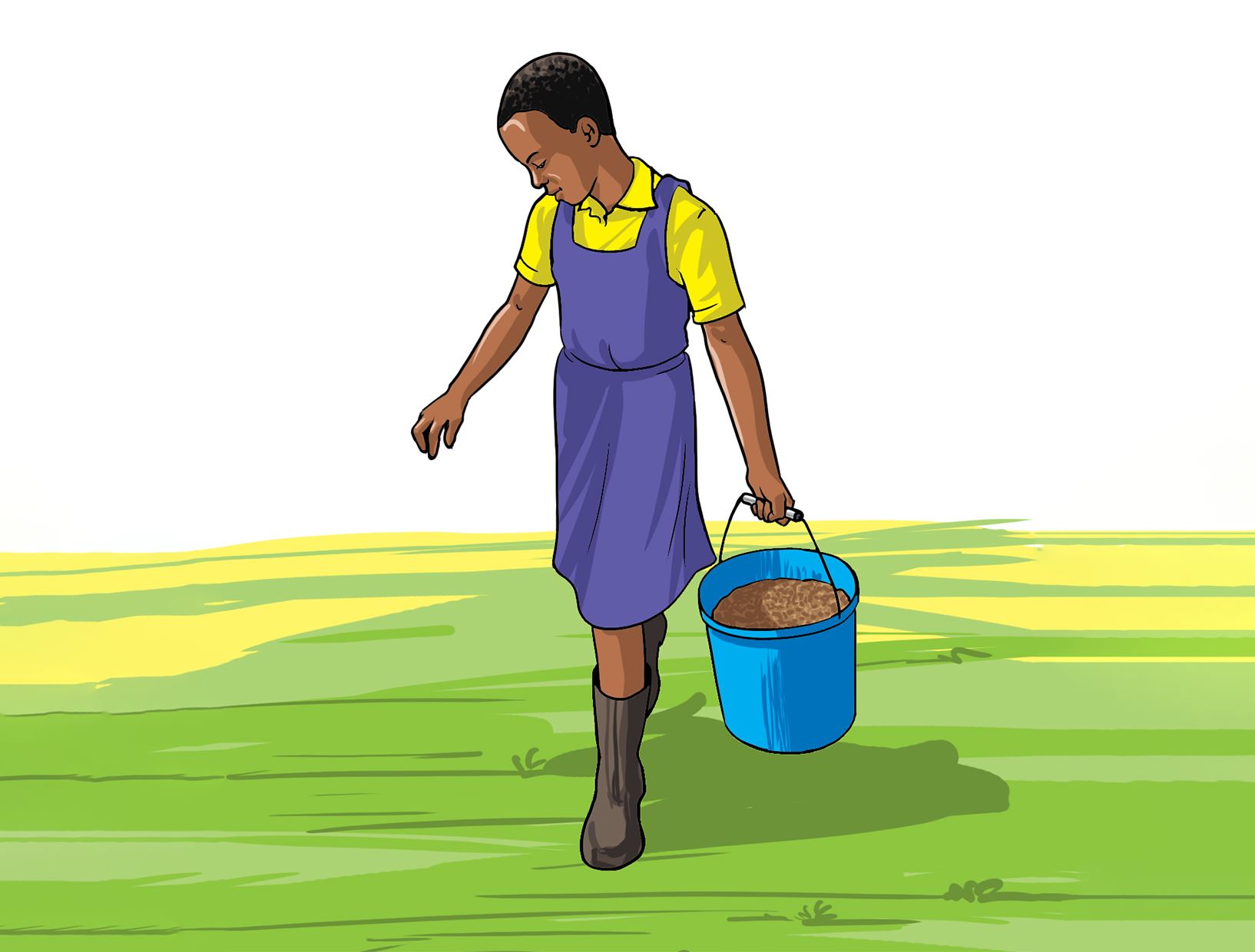
D.
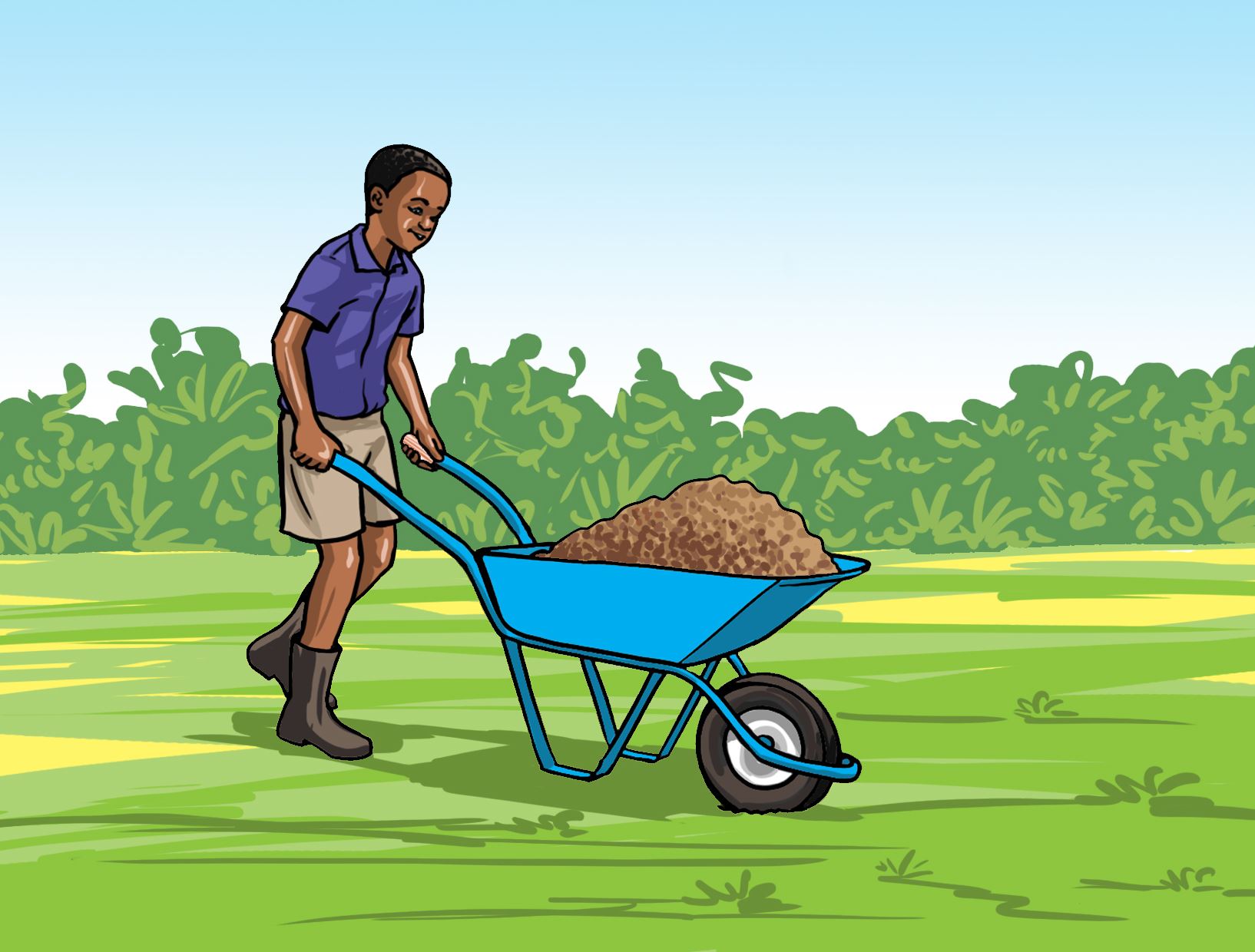
E.

F.
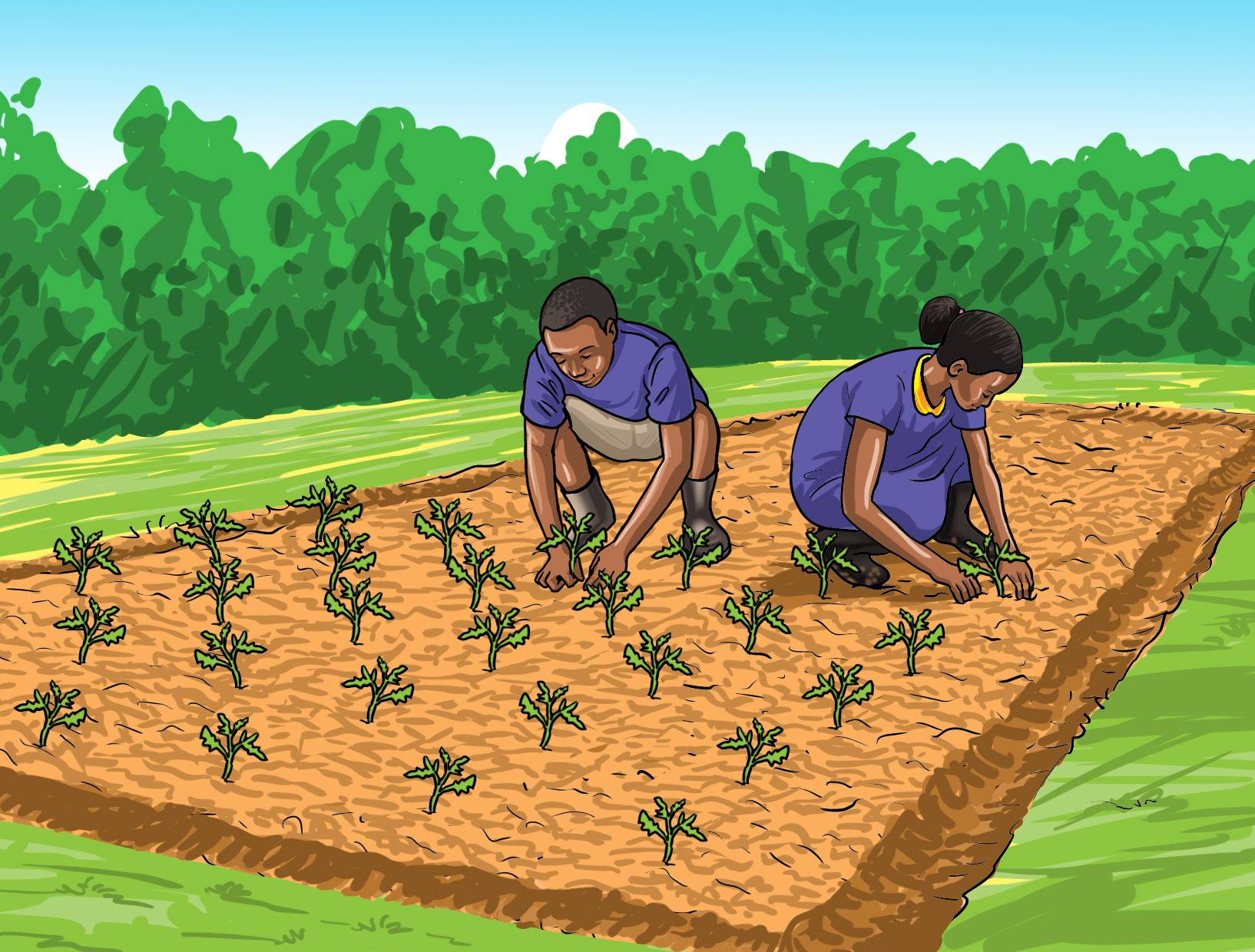
- What activities are carried out in (a), (b), (c), (d), (e) and (f)?
- In groups, discuss how the collected soil can be used for farming purposes.
- Present your findings to the class.
Places where eroded soil is deposited by run-off water
Soil eroded from the upper lands is deposited in various places on the lower side of the land.
Activity 4
Identifying and listing places where soil is deposited by run-off water.
Let us Find Out
Move around in the school or in the neighbourhood.
- Identify where eroded soil is deposited by run-off water.
- Share with your friend the places where soil is deposited.
Look at the following pictures.
A.
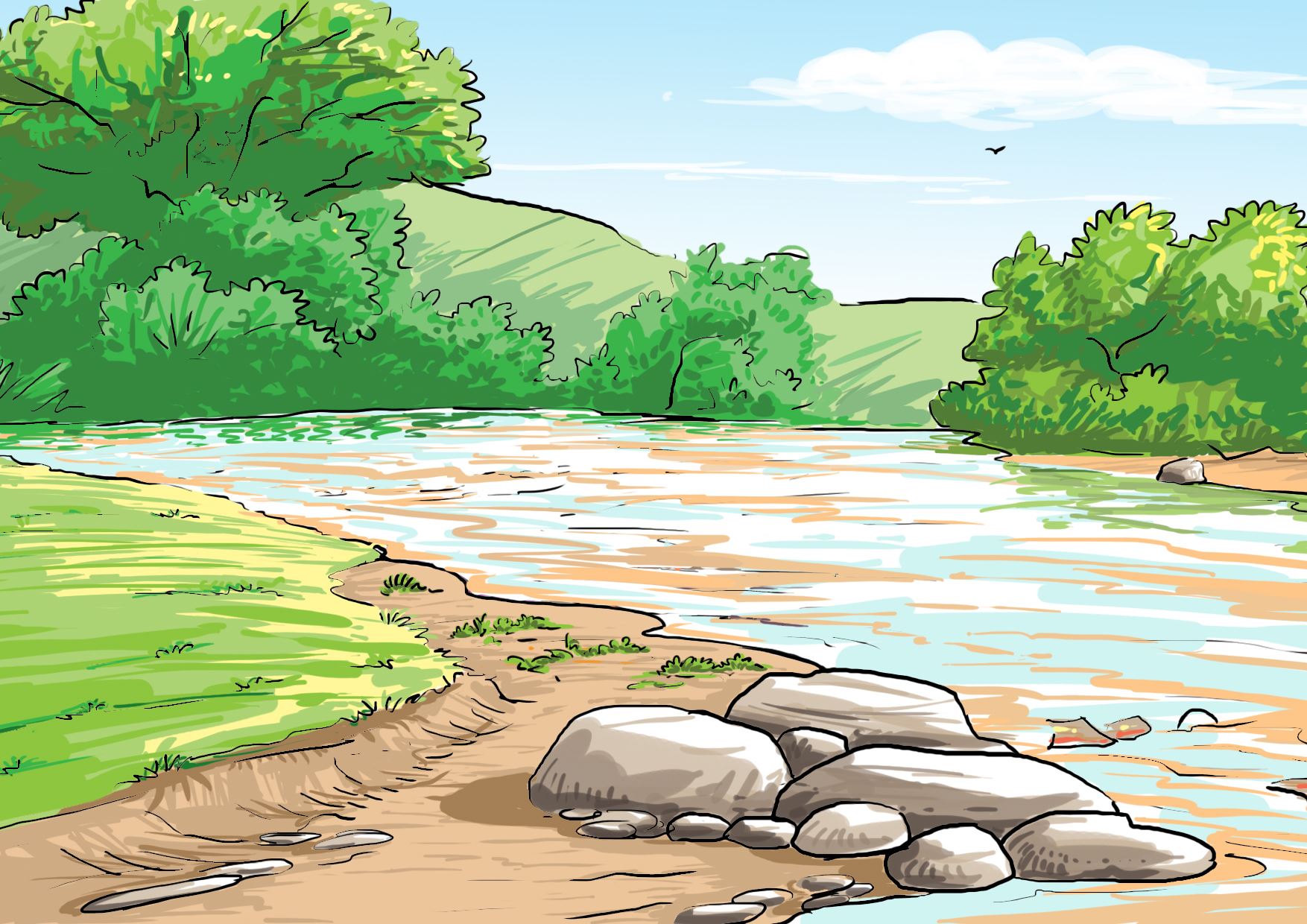
B.

C.
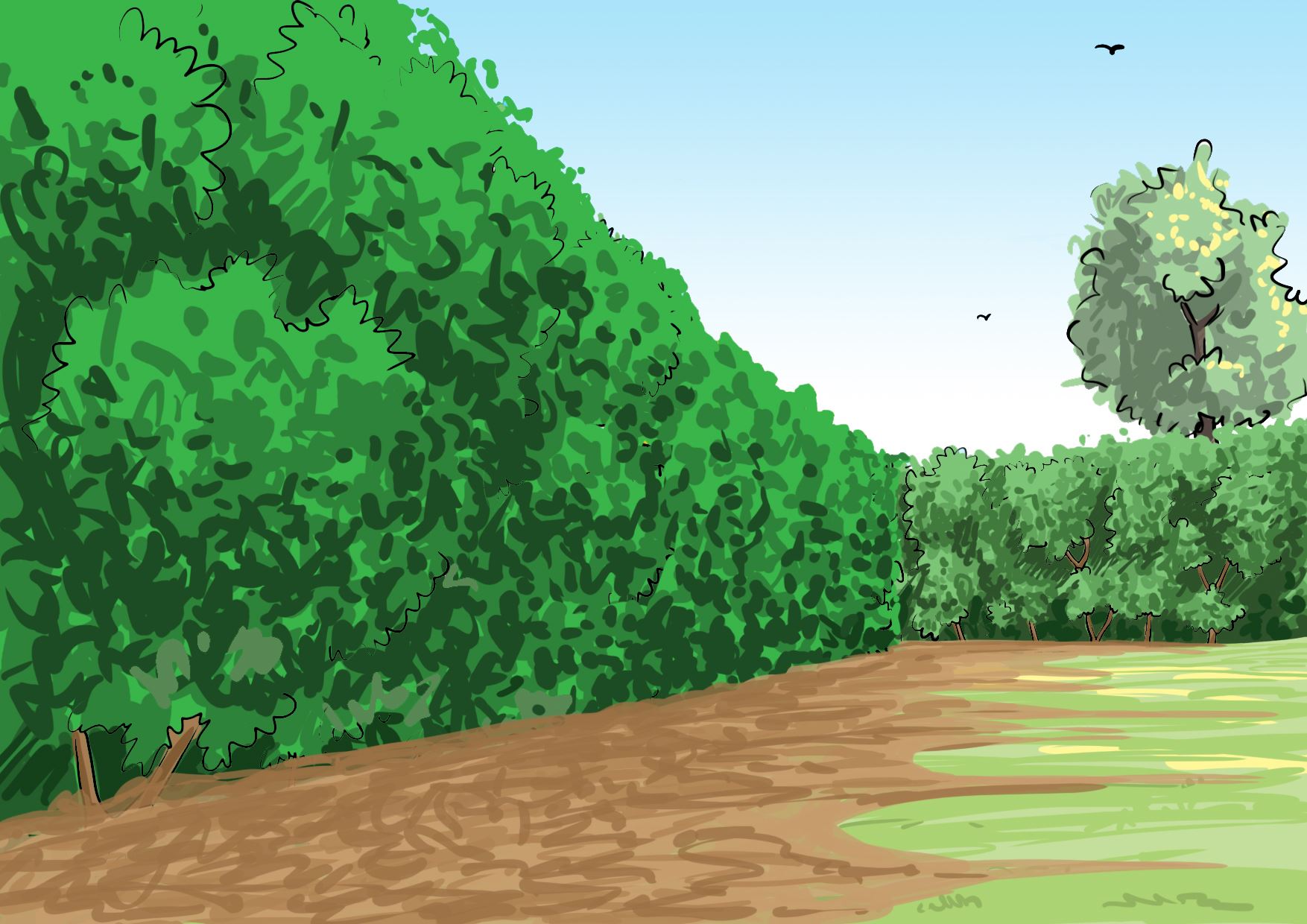
D.
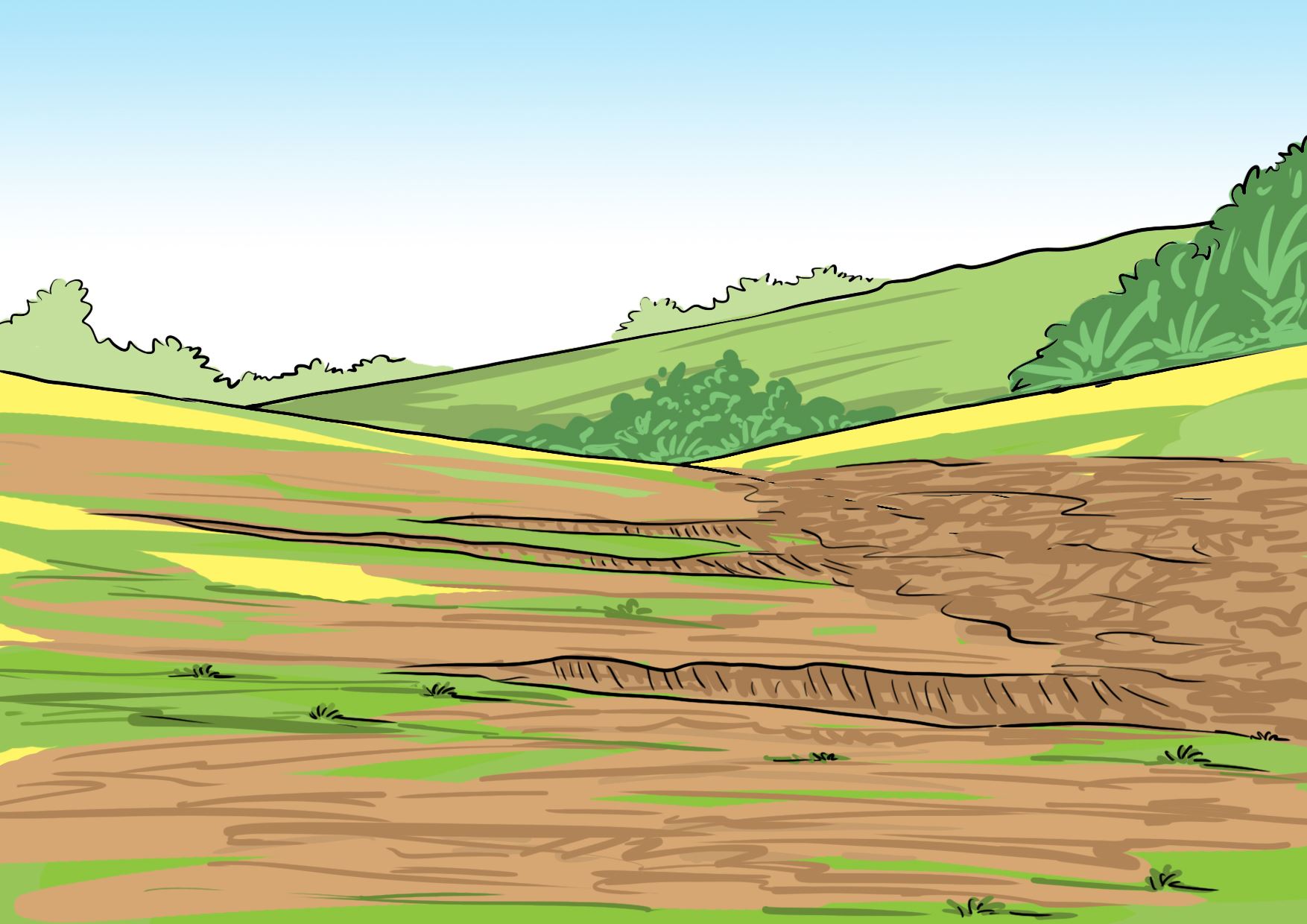
Let us understand
Eroded soil may be deposited in the following areas:
- End of a gulley
- Fence line
- Trenches
- River bank
- Road side
Recovering eroded soils for growing crops
Soils from deposition sites can be collected and recovered for growing crops.
Activity 5
Collecting soil from deposition sites to recover it for growing crops.
Let us practice
Work in groups to collect deposited soils from:
- End of a gulley.
- A trench.
- A river bank.
- Fence line.
- Road side.
Look at the following pictures and answer the questions that follow.
A.
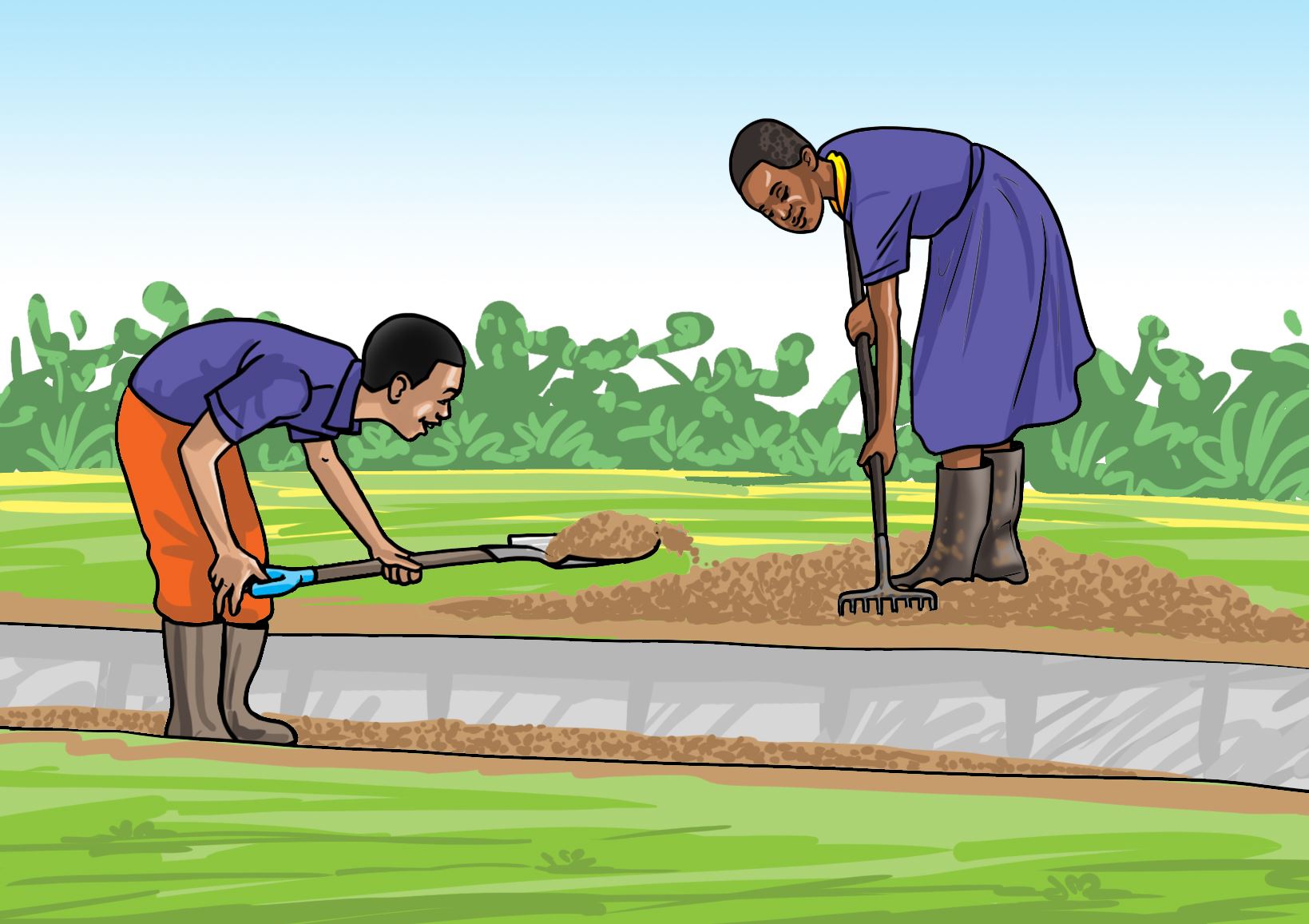
B.
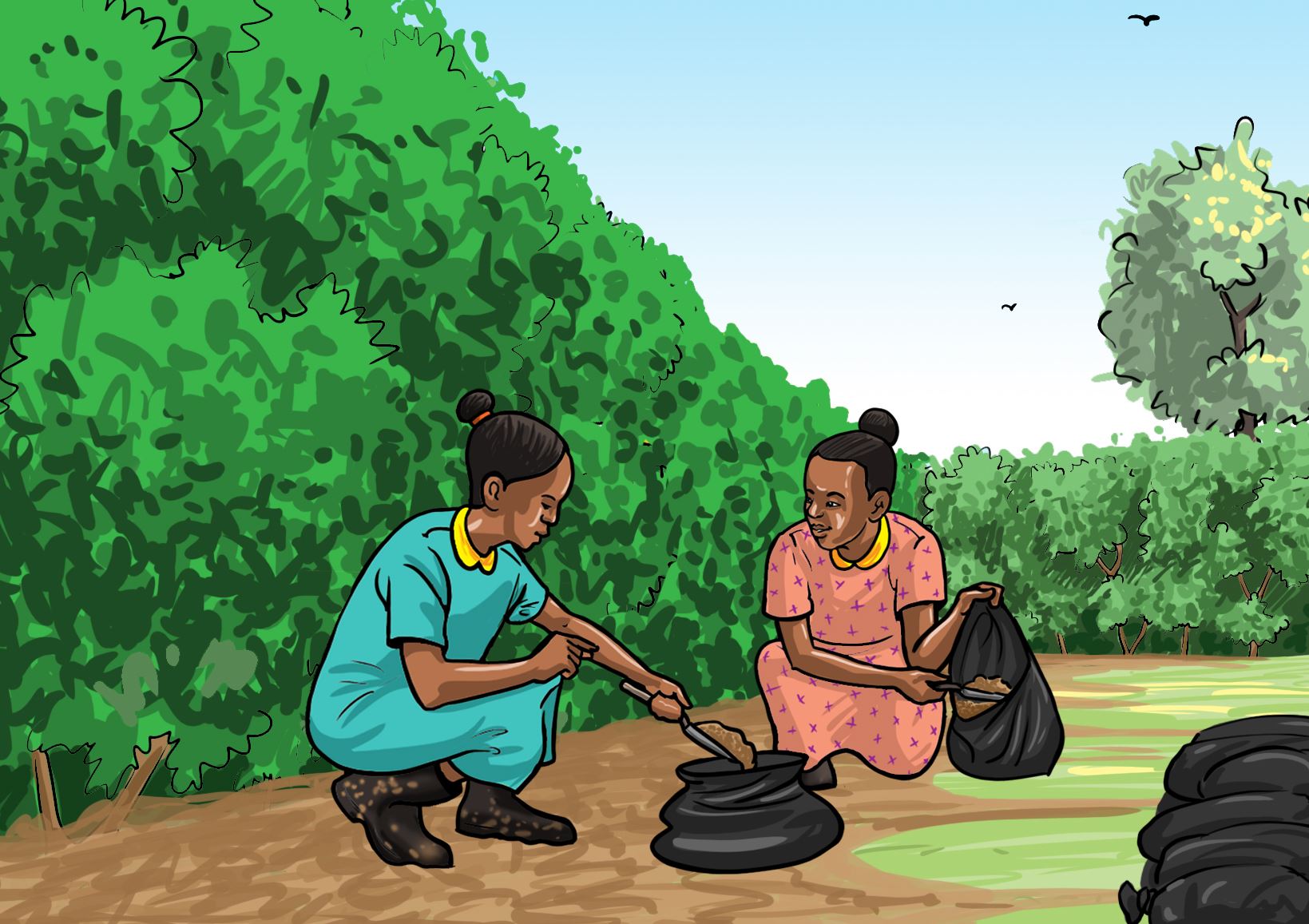
C.
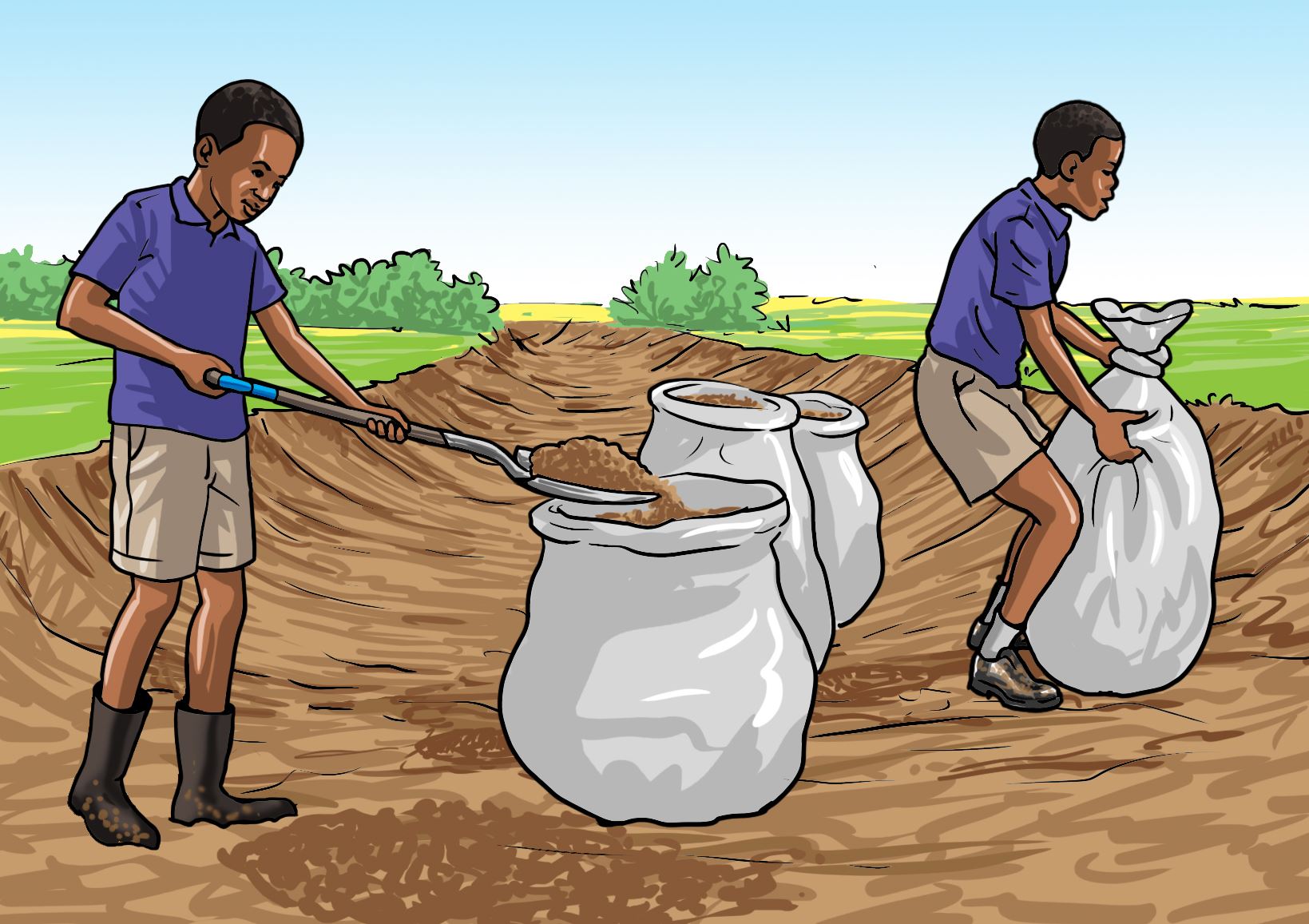
D.
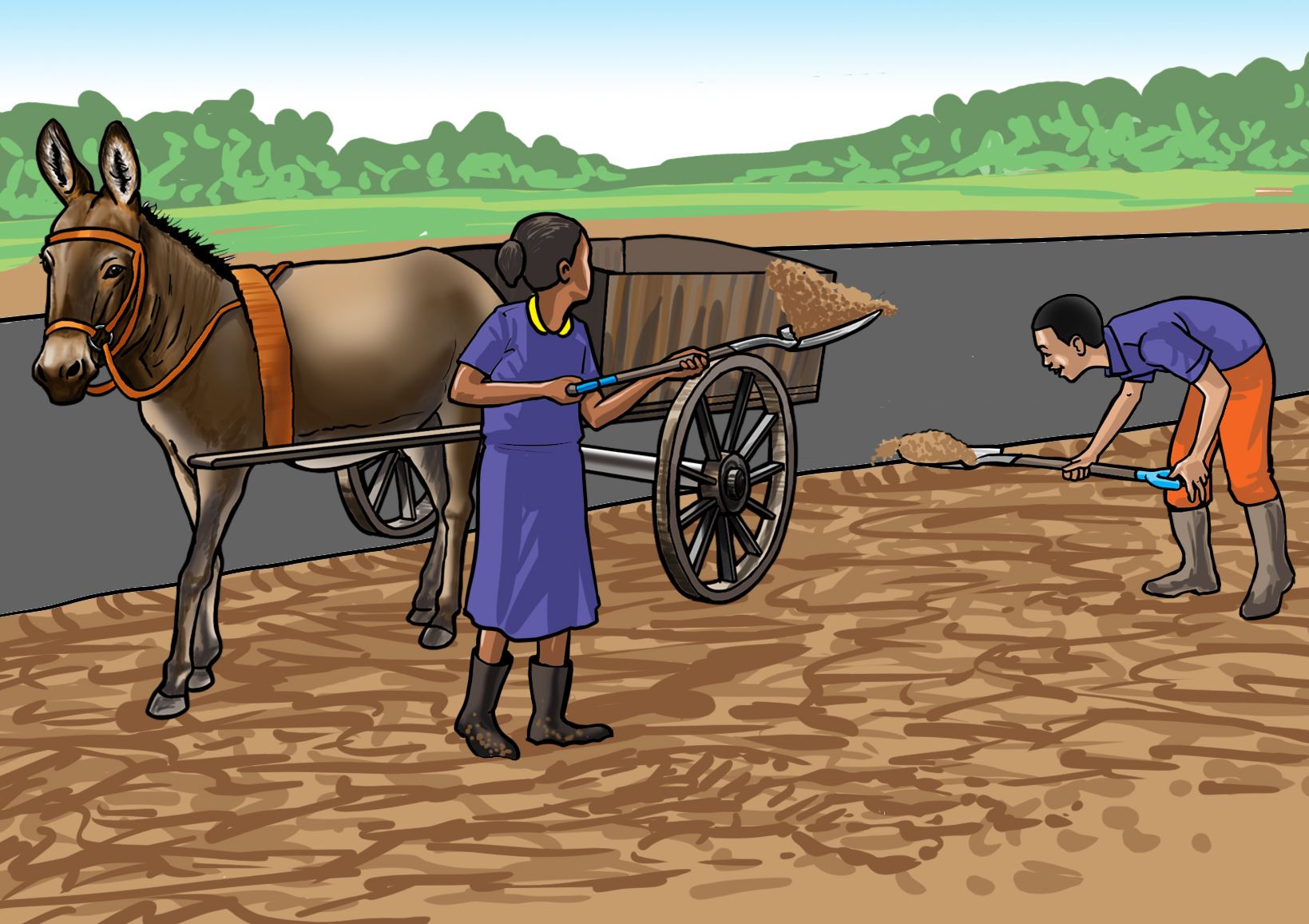
- What are the learners doing?
- Where are they carrying out these activities?
- How do we collect eroded soil in our school compound and community land?
- How can we use the soil we collect from erosion deposition sites?
Let us understand
Deposited soil can be collected using scooping method. The collected soil is then taken where it can be used to grow crops.
Usefulness of recovered soil
Recovered soil can be used for growing crops.
Activity 6
Growing different crops on recovered soil.
Let us practice
- Select an appropriate site in the school to place the recovered soil.
- Mix the recovered soil with enough compost manure.
- Put the soil mixed with manure in containers or spread it on the ground.
- Plant a crop of your choice.
- Take care of the crop.
Look at the following pictures and say how recovered soil is being used.
A.
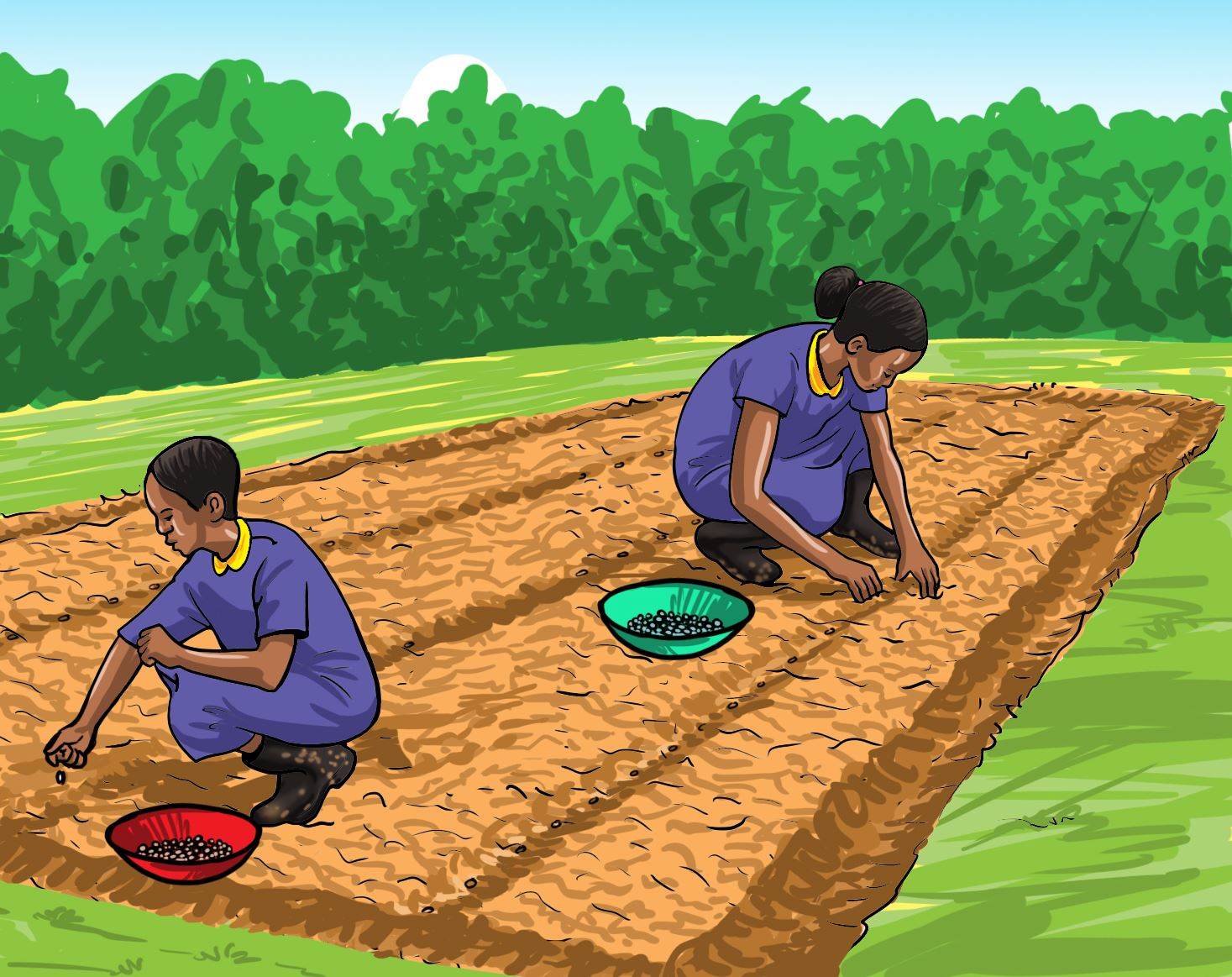
B.
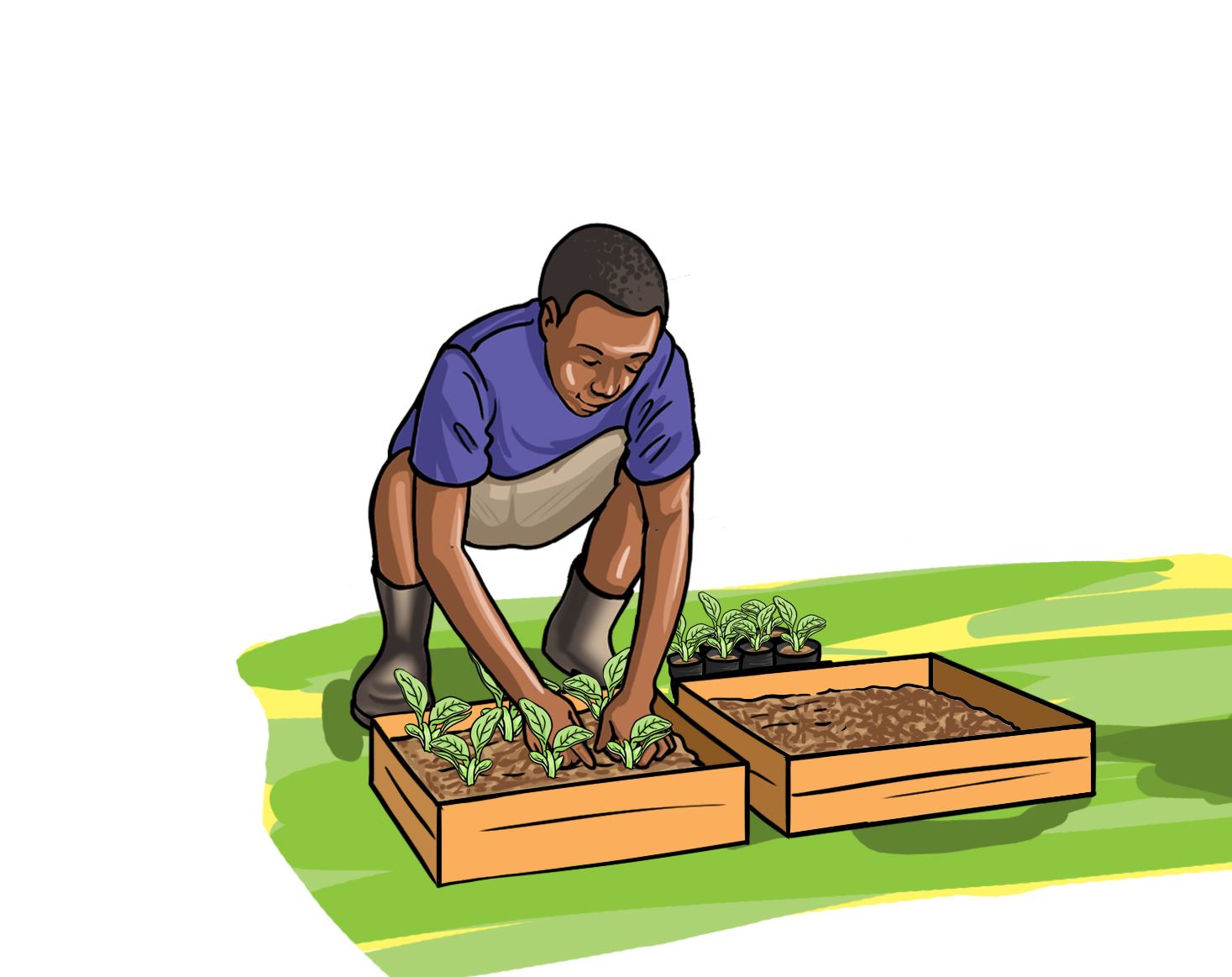
Let us understand
Recovered soil can be placed in containers or spread on the ground to grow crops.
Activity 7
Home project
Helping parents or guardians to collect and use eroded soil to grow crops.
Help your parents or guardians to collect and use eroded soil to grow crops at home.
Follow the steps shown in the following pictures to collect and use eroded soil to grow crops.
A.
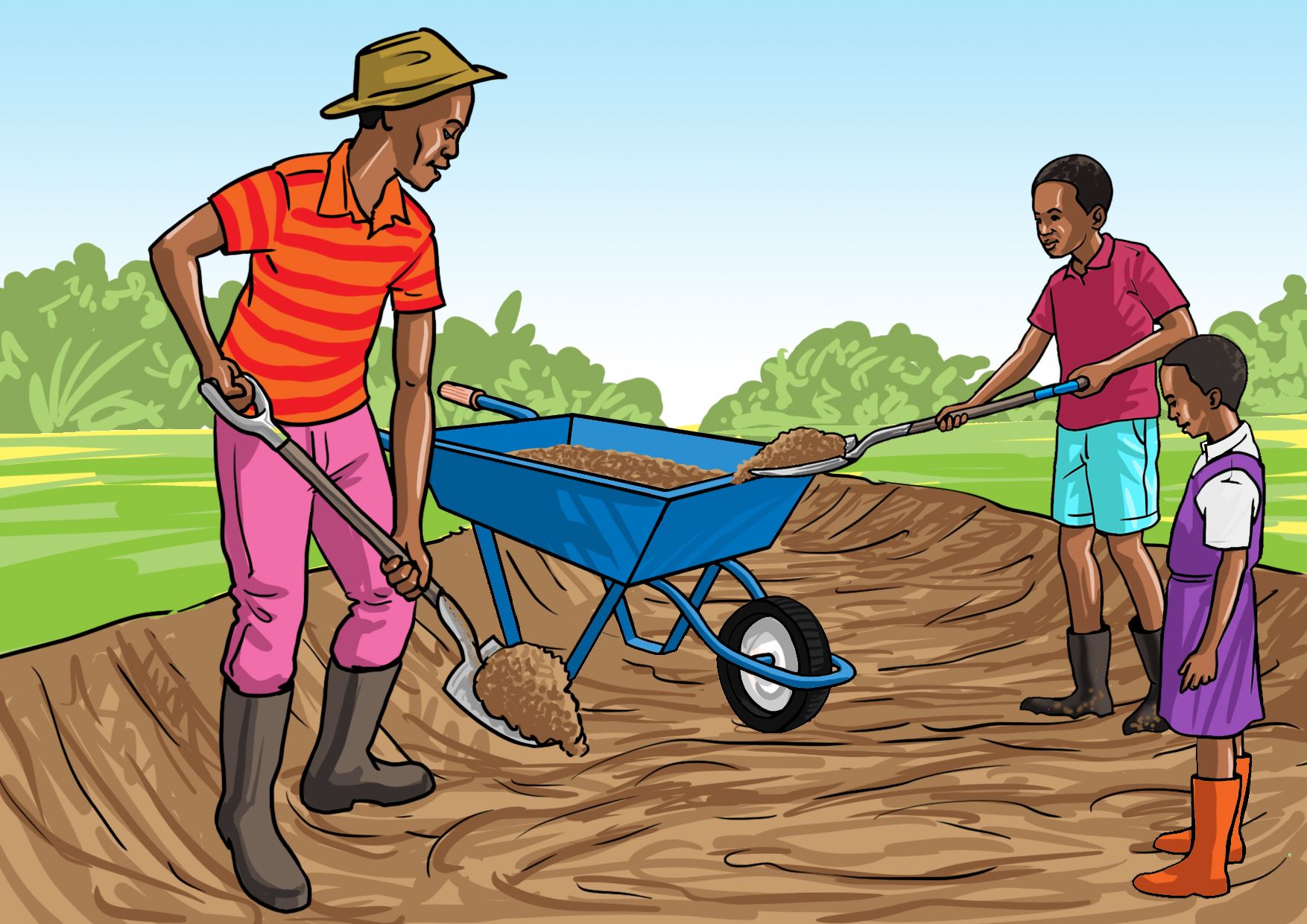
B.
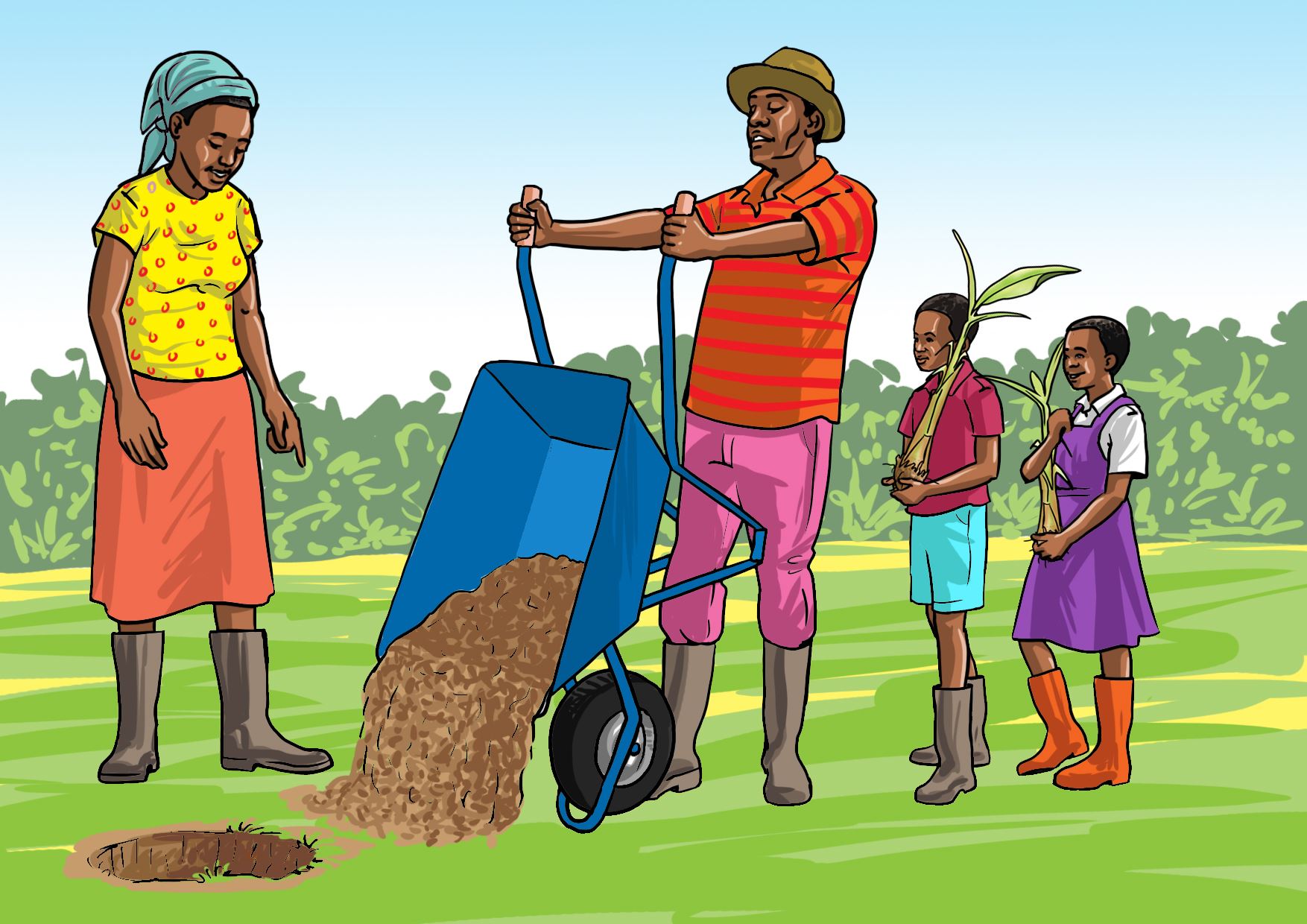
C.
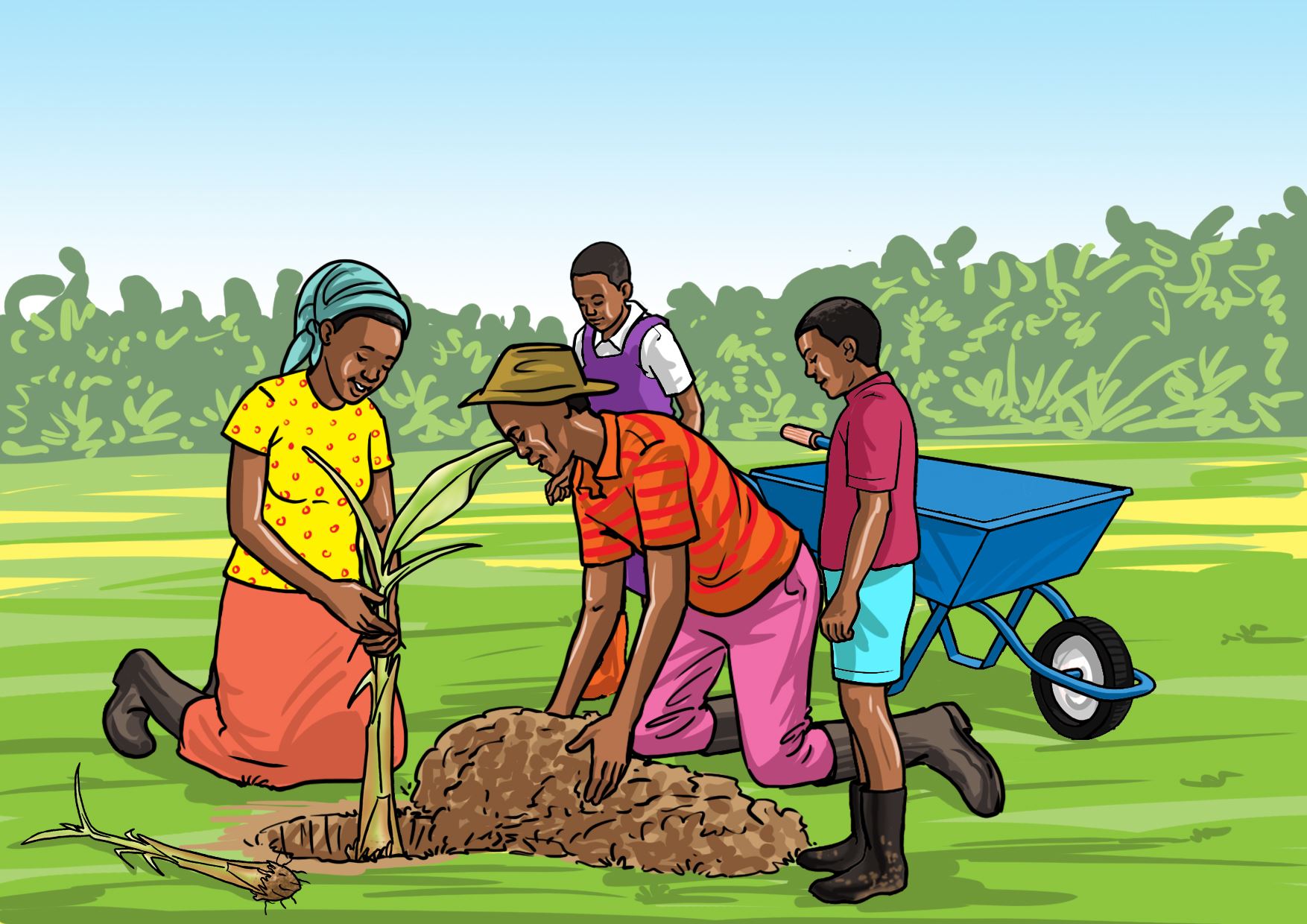
- Tell community members how they can recover eroded soil.
- Participate in community events to collect eroded soil from deposition sites.
- Demonstrate to community together with your class how to grow variety of crops on recovered soil.
Let us understand
- Soil recovered from deposition sites is used to produce healthy crops.
- Recovered soil can be used in pits to grow bananas, in trenches to grow napier grass and to raise tree seedlings in nursery beds.
1. Which soil is eroded?
- Loose soil.
- Compacted soil.
2. Where is eroded soil taken?
- In a valley.
- On the hill.
3. Soil erosion is:
- Carrying away of soil.
- Carrying away of plants.
4. We conserve soil from erosion to:
- Prevent animals from dying.
- Retain good soil for better crops.
5. Eroded soil is not lost completely. We can ... for use.
- Recover it back.
- Replace it.
6. We grow healthy crops from recovered soil because ....
- it has rich organic manure.
- it has large stones with water.